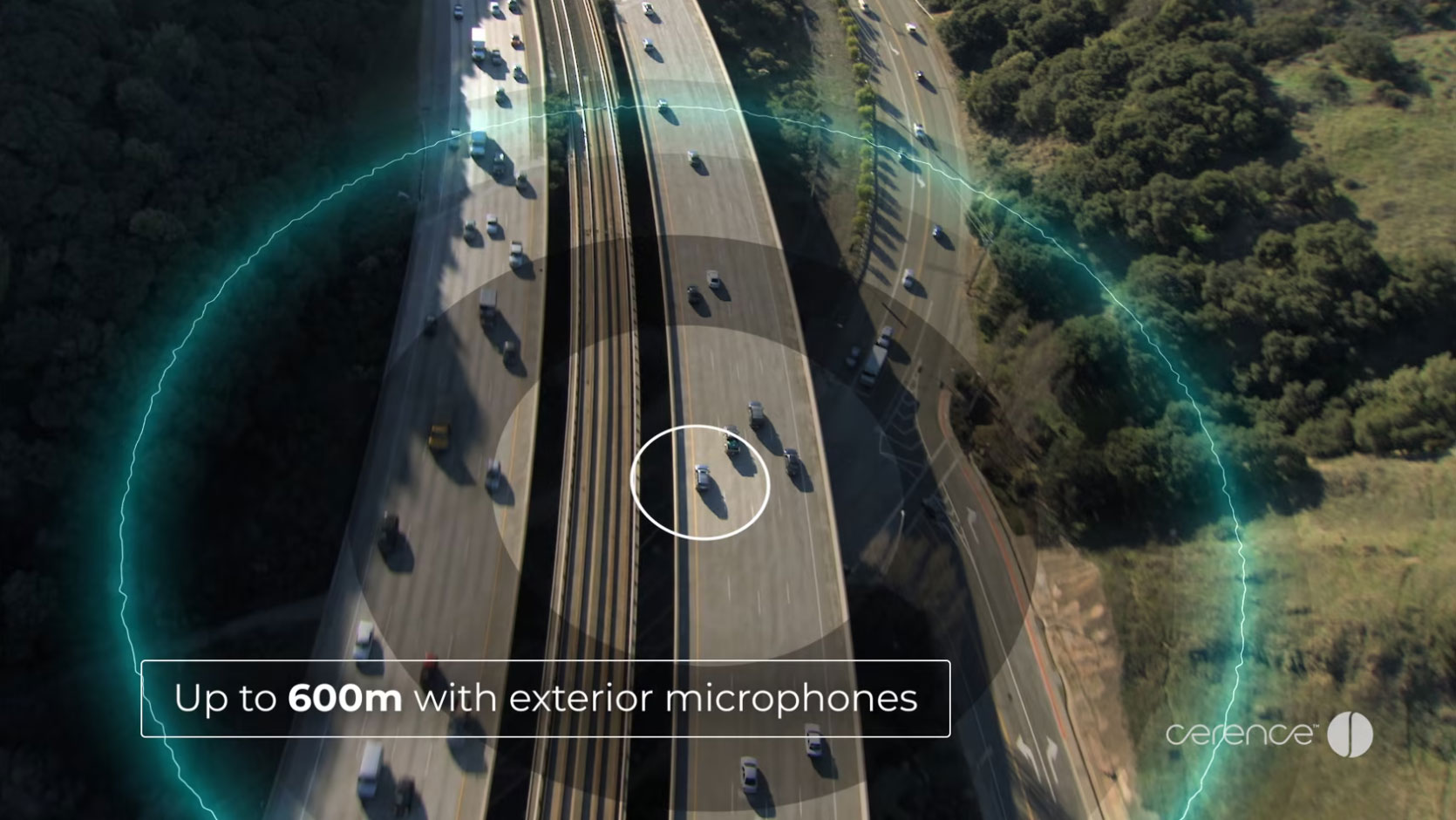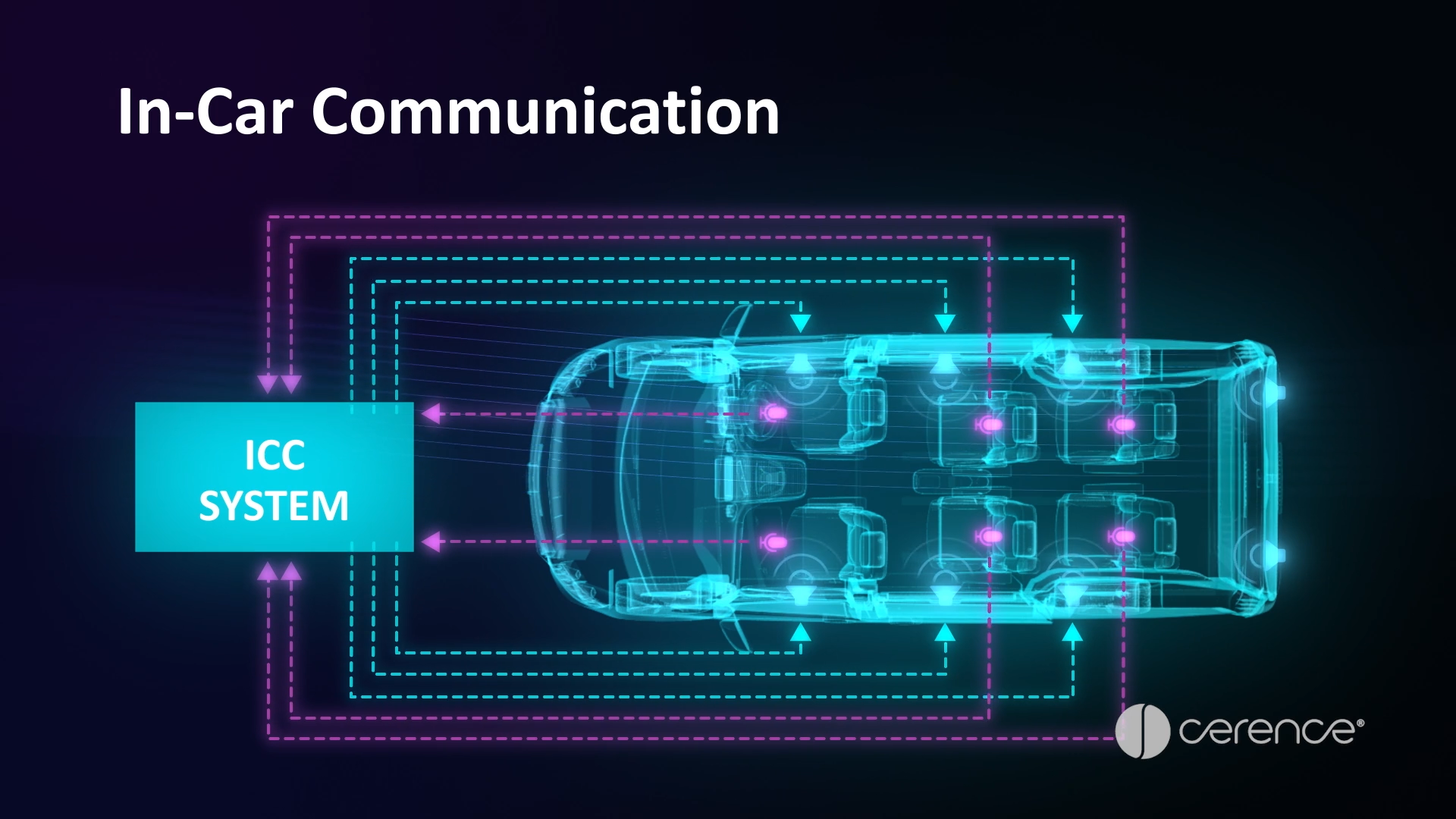Audio AI
AUDIO & COMMUNICATION AI
Automotive and transportation user experiences face unique challenges, including noisy acoustic conditions. The desired sounds inside and outside of the vehicle are often masked by driving noise, vehicle entertainment, interfering passengers, and more. Our Audio AI solutions create a safer and more enjoyable journey for everyone by cleaning up audio signals and reducing the detrimental effects of environmental noises.
Cerence Emergency Vehicle Detection
When asked how in-car technology could best improve their driving experience in the future, nearly half of respondents to a Cerence AI survey said they are looking for greater assistance during stressful driving situations. Cerence Emergency Vehicle Detection (EVD) provides just that, integrating with the automotive assistant to alert drivers about approaching police cars, ambulances, and fire trucks so they can adapt their driving accordingly.
Cerence EVD uses existing microphones to accurately and reliably recognize a broad array of emergency siren signals and the direction they are coming from. Once a siren is identified, the volume of the radio or other media is lowered, and the driver is alerted visually via the headunit and via audio from the automotive assistant.
In many countries, it is required by law that drivers give way to emergency vehicles, and autonomous cars are required to detect and react to emergency vehicles as well. Cerence EVD addresses these regulations and will be critical to the cars of the future.
In order to be understood, we must first be heard. That’s why Cerence Speech Signal Enhancement (SSE) is a critical piece of our offerings.
SSE is a suite of sound processing technologies that remove noise from microphone inputs, teeing up our world-class voice recognition and natural language understanding engines to work their magic with clear input from drivers and passengers.
SSE is critical to the in-car experience, enhancing speech quality for phone calls, enabling drivers to effectively use wake-up words and seamlessly interrupt and interact with the assistant, and allowing us to create speaking zones so the assistant knows exactly who is speaking – and who might need to be muted.
Speech Signal Enhancement
When leveraged alongside Speech Signal Enhancement, our multi-seat intelligence technology enables everyone in the car to interact with the automotive assistant, without worry of interference or interruption.
Deep neural net-based noise reduction with superior noise suppression supports a new level of multi-zone, hands-free communication, with up to eight zones with a maximum of 30 microphones. It’s also equipped with up to 16 configurable output channels with flexible zone selection and multi-zone arbitration to support both Cerence Assistant and multiple third-party assistants.
Beyond interaction with the automotive assistant, multi-seat intelligence delivers an ideal solution for drivers taking phone calls on the road, enabling perfect suppression of interfering speech from other zones by combining beamforming with passenger interfering techniques. Pair that with the ability to enable and disable zones dynamically during a conference call, and you’ve got an entirely new in-car phone calling experience.
Multi-Seat and Multi-Zone Intelligence
Cerence In-Car Communications
The car can be a noisy place. From the sounds of the road to competing entertainment and chatty co-pilots, extra noise can interfere with not just the automotive assistant, but even conversations between the driver and passengers. Passengers shout; drivers turn around to speak to passengers in the back, all increasing distraction and compromising safety on the road.
Enter Cerence In-Car Communication (ICC). ICC improves the speech quality and intelligibility of in-car conversations between the driver and passengers through an intercom system. Perfectly suited for larger vehicles like minibuses and vans where there are more than two rows of seats, ICC picks up speech from the driver through specially placed microphones, processes and cleans it up, and plays it over the speakers in the rear of the car – all in an instant.
Cerence Exterior Vehicle Interaction
Imagine being able to turn on your car’s lights, close your trunk, park your car, and more – all by simply using your voice. No hands required, and with the utmost reliability and security.
Cerence Exterior Vehicle Interaction makes these seemingly futuristic interactions a reality. This suite of AI and voice-powered innovations combines speech recognition, natural language understanding, text-to-speech, speech signal enhancement, and voice biometrics with the growing number of exterior microphones on today’s cars to enable drivers to interact with their cars from the outside.
Cerence Exterior Vehicle Interaction is extraordinarily useful for today’s car owners and will be critical for the autonomous, shared vehicles of the future, giving users the ability to, for example, inquire about a shared, driverless vehicle’s planned route, anticipated delays, and more.



